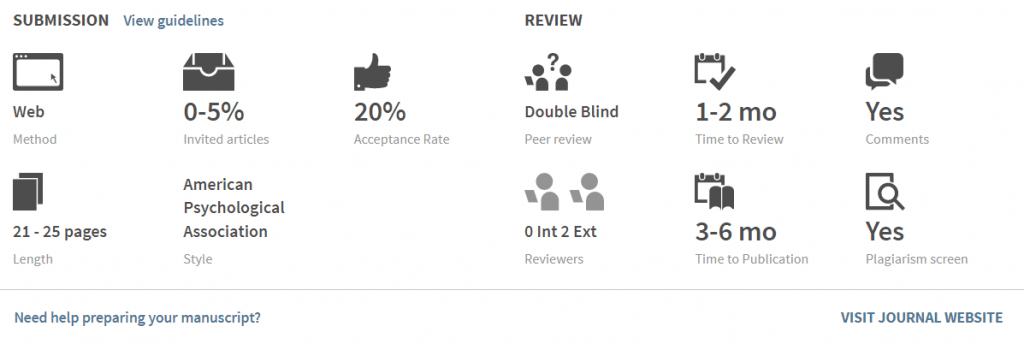
Selecting a journal in which to publish your research is an important decision. With so many journals from which to choose, it can be daunting to compare journals and avoid publishing in a predatory or questionable journal, all while trying to find submission requirements, peer review information, and author guidelines to inform your decision making process. GW users now have access to Cabells Directory of Publishing Opportunities which can help you compare journals and identify predatory journals to avoid!
GW’s access to Cabells includes access to Journalytics and Predatory Reports. The Journalytics portion provides information on reputable journal titles including manuscript and submission guidelines, discipline, intended audience, peer review information, and acceptance rates. This information can help authors compare journals and make an informed decision regarding where to submit a manuscript for publication. Inclusion in Cabells Journalytics is by invitation only and criteria for inclusion can be found in the Journalytics Selection Policy.
The screenshot below is an example of the submission and review information listed for the Journal of Advanced Nursing found in Cabells Journalytics:

Journalytics also allows you to compare up to 5 journals by selecting the titles you wish to compare, and clicking on the “Compare 5” button at the top of the search results. The screenshot below shows a side-by-side comparison of 5 emergency medicine journals:

The Predatory Reports portion of Cabells tracks journal titles that have been associated with predatory journal publishers based on violations of scholarly publishing standards and best practices. Cabells has established criteria for identifying deceptive, fraudulent, and/or predatory journals and provides a list of violations for each title listed in Predatory Reports. Examples of severe violations include: false qualifications or credential claims; fake ISSNs; fake, non-existent, or deceased editors; false peer review claims; publication of non-academic or pseudo-science papers; false indexing claims; lack of published articles or archives; misleading metrics; and misleading or false fee information. Cabells provides access to the complete list of Predatory Reports Criteria on their website.
The screenshot below shows an example of a list of violations from a title listed on Cabells Predatory Reports:

If you’d like a second opinion, or are unable to find a title you are suspicious of listed on Cabells Predatory Reports, don’t hesitate to use Himmelfarb’s Predatory Journal Check-Up Service by contacting Ruth Bueter (rbueter@gwu.edu).
Whether you want to check to see if a journal in which you are interested in publishing could be a predatory journal, or you want more information about potential journals to which you might want to consider submitting your manuscript, Cabells Directory of Publishing Opportunities can provide you with the concise information you need all from a single, easy-to-use interface! To learn more, or if you have questions about this resource, contact Ruth Bueter (rbueter@gwu.edu).


